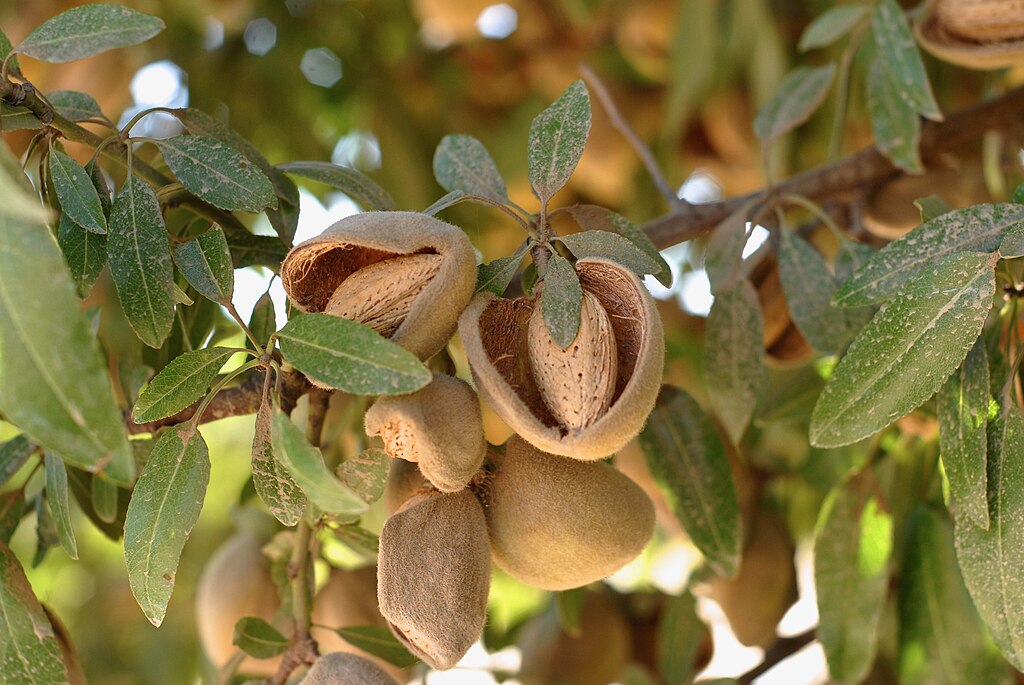
Almonds maturing in California’s Central San Joaquin Valley. Credit: PAC55/Wikimedia
Featured Research
Unchecked climate warming may shrink California’s almond harvest 49% by end of century
Even under moderate warming, producers can expect a 17% yield reduction, but innovation in farming techniques could offset the damage, according to a new study that models the effects of temperature and humidity changes at each developmental stage. [Earth’s Future study]
Rise of electric vehicles shifts pollution concerns to brakes and tires
A case study in Tianjin city, China, inventoried the vehicle emissions that don’t spill out of exhaust pipes, finding fine particulates (PM2.5) release during wear on brakes and tires surpassed particulates produced from combustion engines. [Journal of Geophysical Research: Atmospheres study]
Dust devils could dust solar panels on Mars
Dry whirlwinds roam the Red Planet, often rising hundreds of meters above the surface. When conditions are right, they lift bright, reflective dust off a layer of coarser grained surface material, leaving dark tracks that mark their passage for months after the vortex has passed. The first high-resolution global survey of dust devil tracks found they peaked in summer around 60 degrees north and south of the equator, coinciding with the peak of Mars’ dust storm season. The authors suggest placing solar-powered missions in the path of heavy dust devil traffic to take advantage of the occasional scouring. [Geophysical Research Letters study]
Panama connected the Americas 4.1 million years ago
4.6 million years ago, the Central America Seaway still flowed between the Americas, but it was growing shallow. Half a million years later, thin channels may have carried animals across the isthmus, but the ocean basins were functionally separate on the ocean scale, say the authors of a new geochemical study. Isotopes bound in the fossils of tiny ocean animals record the end of exchange of seawater and nutrients between the oceans. Previous estimates put this date at 3.2 million years ago based on evolutionary divergence of related animals in the Atlantic and Pacific. [Paleoceanography and Paleoclimatology study].
New study questions Curiosity Rover’s methane detection on Mars
Curiosity’s detection of the gas, if atmospheric, could be an indicator of life on the Red Planet. But skeptics say further work is needed to rule out the rover itself as the source of the methane. [Eos research spotlight][Journal of Geophysical Research: Planets study]
The uncertain fate of the Beaufort Gyre
Climate models produce widely varying predictions for what will happen to this influential ocean current, but most models predict it will weaken or stop. [Eos research spotlight][Journal of Geophysical Research: Oceans study]
#